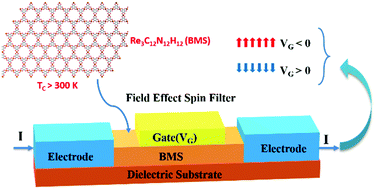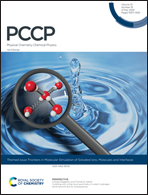Robust spin manipulation in 2D organometallic Kagome lattices: a first-principles study†
Abstract
The search for 2D ferromagnets with versatile magneto-electronic properties is becoming more active due to their potential applications in spintronic devices. To screen out the optimal compositions, we have explored a series of two-dimensional M3C12X12 (M = 5d transition metals, and X = S, NH, and O) metal–organic frameworks with Kagome lattice patterns through first-principles calculations. By varying the metal center and ligand functional radicals, both the electronic and spin-related properties can be easily tuned to meet the requirements for multifunctional applications in spintronic devices. Among them, Re3C12N12H12 is identified to be a ferromagnetic bipolar magnetic semiconductor with the highest Curie temperature (TC > 330 K). Re3C12O12 is found to be an ideal half-metal with a spin gap of 0.97 eV, which is beneficial for use as a spin-filter. Meanwhile, both Re3C12N12H12 and Re3C12O12 exhibit considerable out-of-plane magnetic anisotropy energies (>26 meV per atom), which benefit the spintronic applications. The theoretical results not only show that the 2D organometallic Kagome lattice is a good platform for designing spintronic materials, but also provides a feasible way to realize robust spin manipulation.



 Please wait while we load your content...
Please wait while we load your content...